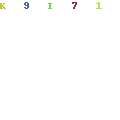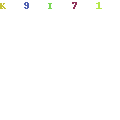Mumbai: “Our mother offered the ride on route number 123 to us as a form of entertainment,” recalled Kainaz Messman, founder and creative director of Theobroma Foods. Messman, whose childhood home was behind the Colaba Post Office, recalled that the family would take their car to the historic RC Church, board the double-decker bus and ride it all the way to Tardeo before getting off and taking a single-decker bus back on the same route.
This was a few decades ago. What was so special about the ride was that sitting on the top deck of the bus revealed the many layers of Mumbai, as it drove past the Bombay Gothic structures along Oval garden, the Arabian sea swerving into view as it turned towards Marine Drive and then, the bustle of the Maharashtrian working-class neighbourhoods of Girgaum and Tardeo. This route Messman said formed an intrinsic part of her childhood association with double decker buses, with the family often picking up “sing chana” (peanuts) in paper cones as snack for the ride, and young Messman rushing to the front of the top deck to get the best seats that would offer an unhindered view.
The first double-decker bus was introduced in 1937, and by 1962, it plied along 26 routes — each was named after a letter of the alphabet. Mumbai historian Deepak Rao said that the expansion of the city meant that the buses had to be re-christened, this time with numbers. Route ‘C’ — which Messman rode on her family outings —became 123, for instance. These buses became immensely popular, and between 1948 and 1993, over 882 double-decker buses were introduced. However, the parts were not easily available, and maintenance became an issue. What’s more, they occupied more space on the road. BEST began to phase out the fleet, retiring double-decker buses after their shelf life of 25 years ended — by 2018 only 120 remained and by 2021, there were only 48 in Mumbai.
“Not getting that front seat would often feel like a loss. No other bus would give you that joy,” Pankaj Joshi, principal director of Urban Centre Mumbai. One of the reasons for Mumbai’s emotional connect with BEST — the Brihanmumbai Electric Supply & Transport Undertaking, which provides public transportation within the city — is the culture of the undertaking, Joshi said. “The standards and systems of the undertaking are disciplined and show how public transport should be. They are of course derived from the London Metropolitan Transport Undertaking, but the governance is more than 100 years old, and Mumbai is at par with transport systems in other parts of the world, even if the buses aren’t as well maintained,” Joshi said.
The double-decker bus, he added, is synonymous with BEST and Mumbai — other than the Queen’s Necklace on Marine Drive, it is perhaps one of the most iconic images of the city. At one point, double-decker buses were immensely popular toys, and even formed an important trope in the urban landscape showcased in Hindi cinema. Recall Amol Palekar and Vidya Sinha’s love story develop as they waited for the double-decker bus at the bus stops (with their orderly queues) in Choti Si Baat (1976).
“Whether architects or children, it allowed one to see the city at an elevation one normally can’t access. It’s an immediate qualitative improvement in terms of the visual experience,” Joshi, an urban planner, said.
Though a colonial heritage — BEST was first called Bombay Tramway Transport Company, when formed in 1873 — not many cities across the world have double-deckers as mainstream transport systems. “While a few American cities now have them, they are mostly hop and hop off buses for tourists and day pass holders,” Joshi pointed out.
On January 27, state environment minister Aditya Thackeray tweeted that the double-decker bus will make a reappearance. BEST spokesperson told HT that double-deckers have a higher passenger capacity compared to single decker buses (79 passengers in a double-decker and 63 in a single-decker) which makes them more environment-friendly. What’s more, the new buses, 900 of which are expected to be ordered soon, will be also air-conditioned and electric.
Air-conditioned double-deckers may not be able to replicate the exact charm of the top deck, which according to photographer and city flaneur Chirodeep Chaudhuri, lay in its open-to-the-elements windows. He recalled taking the 123 during the monsoon and sitting on the left-side of the top deck with the windows open, so as to enjoy a splash of a stormy sea wave spraying in from Marine Drive.
Historian Deepak Rao, now 73 years old, recalled his own college days — asking a woman out at the time was not an easy task. “Just take them on the 123 route, and they’d be happy. It was a lovely route that went right up till old Chowpatty. And, even the return ride was as beautiful,” Rao said.
Route 130, which began at the Chhatrapati Shivaji Maharaj Vaastu Sanghralaya in Kala Ghoda, wound through Fort, rode down Falkland Road, would often be the vehicle for newly-appointed cops to get a feel of the goings on at Kamathipura, the city’s red-light district.
Once, Chaudhuri said, he and colleague Sameera Khan, were commissioned by the late author Sharada Dwivedi to document the city’s Muslim neighbourhoods. Among his assignments was Mohammad Ali Road. This was 1999 and the JJ flyover had yet to be built.
Chaudhuri who lived in Mazagaon at the time said that he took route number 3 Ltd, which started near Byculla Zoo and went past his house near St Mary’s School. “Sitting on the front seat on the upper deck, I would go up and down that route, taking pictures of the road. That view is now lost with an entire generation thinking that the flyover has always existed,” he said. Chaudhuri also recalls trailer buses—double-deckers with a detachable engine—which plied on city roads between 1967 and 1986.
It’s not just the routes and views that made double-deckers memorable. Chaudhuri recalled being caught by the conductor for spitting out the window from the top deck which would have required the driver to wipe the window; Messman remembered the way ride felt. “It would go into a glide, and on the top deck as we ran it felt like we were gliding too and with the deck being almost empty, it was a feeling of floating and I’d have butterflies in my stomach,” she said.
(With inputs from Aroosa Ahmed)
Source: https://www.hindustantimes.com/cities/mumbai-news/the-best-of-mumbai-a-joy-ride-away-101644084344399.html



